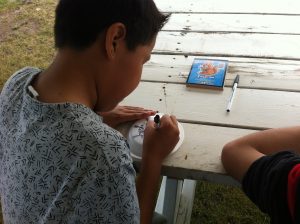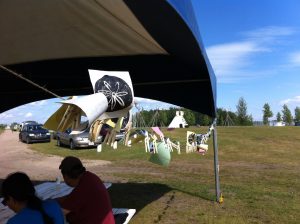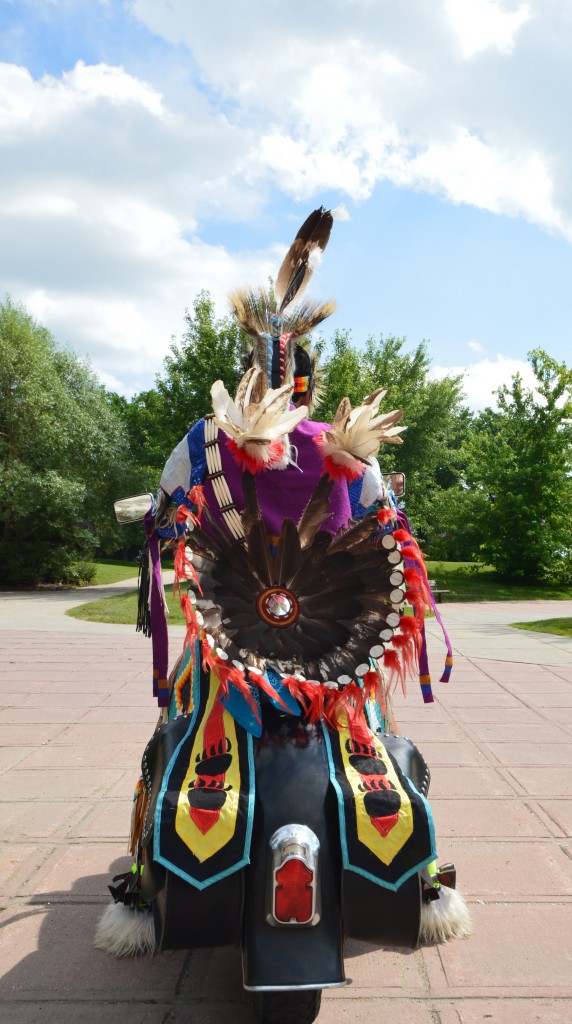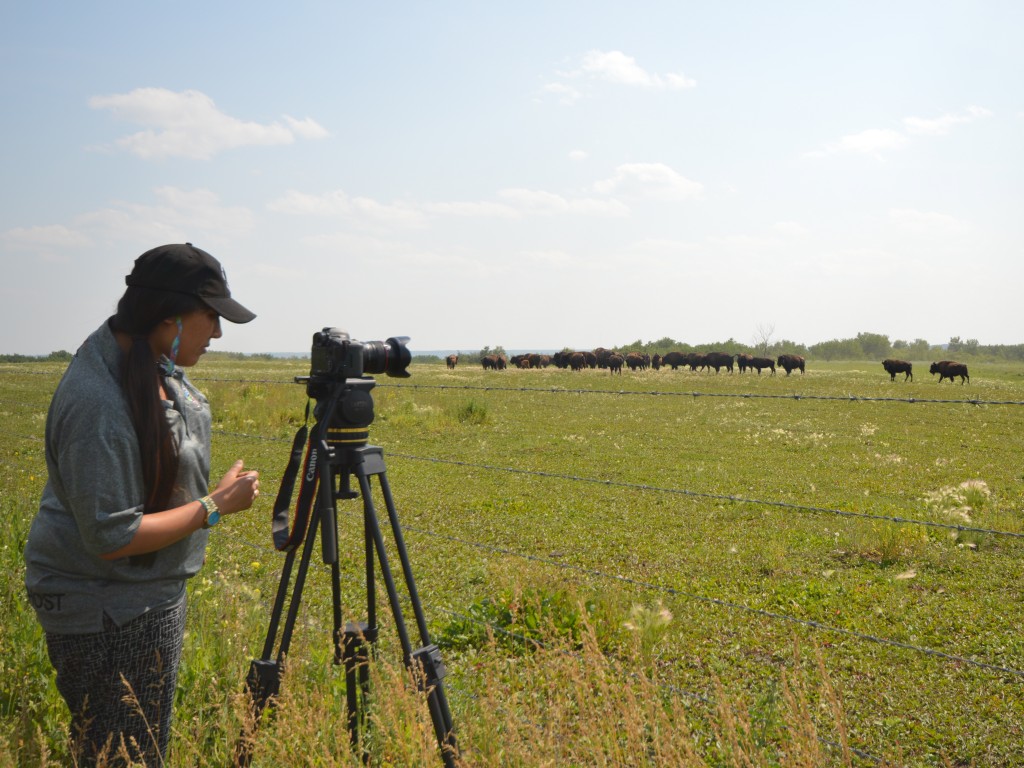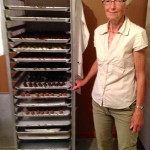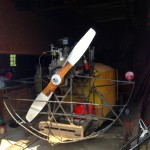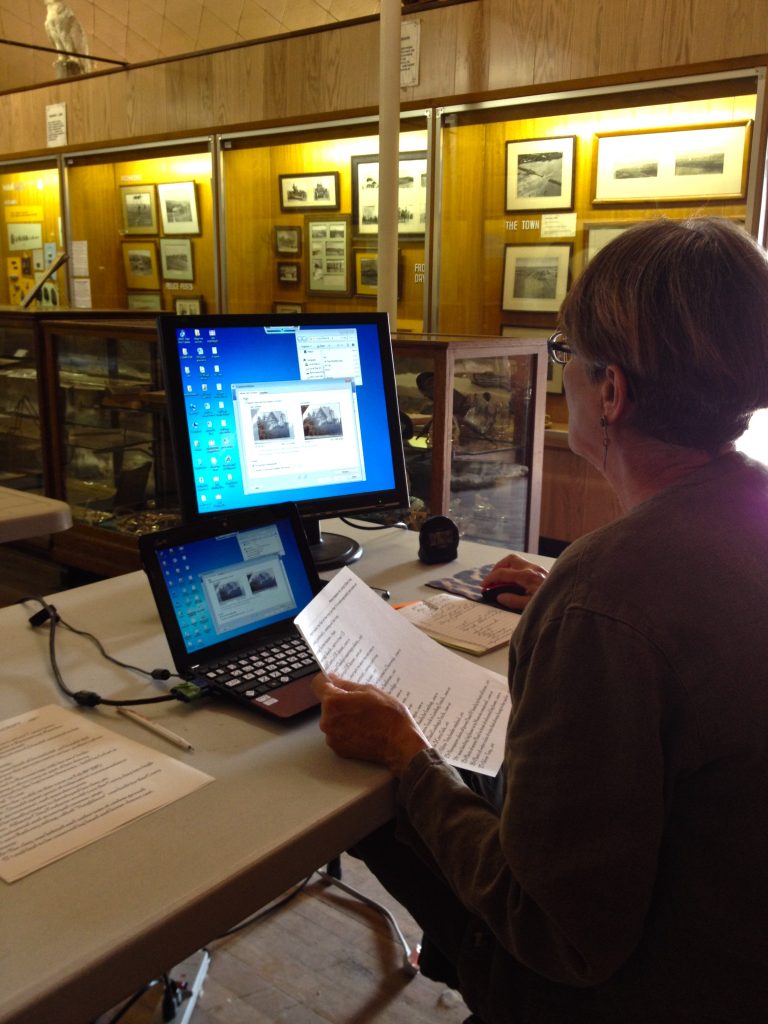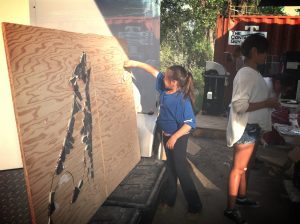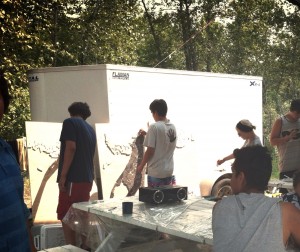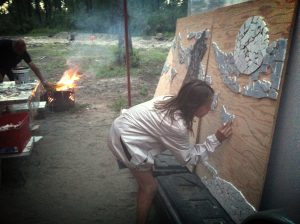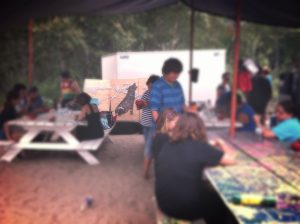All Nations Healing Moon Gathering
Most of my Culture Days Activities (and therefore these posts) focus on the bright side of our society. They focus on the fun, creative, celebratory nature of Saskatchewan.
While I enjoy the positivity of these endeavours and those aspects our Culture, I also feel that if we’re going to put forth a call to engage in Culture we have to be open to all potential aspects of what this might be.
The “All Nations Healing Moon Gathering” is one such example of what I am speaking about. Muskoday First Nation invites the families of those who have murdered and missing loved-ones to gather during the August Full/Super Moon, so as to grieve and heal. During this gathering there is much ceremony and cultural activity. There is a Sweatlodge, drumming, smudging, talking circles, the drying of meat and fish, the collection of sweetgrass and sage, feasts, and more.
That said, I was more than happy to be asked to attend this gathering and facilitate a craft or art workshop that could run alongside all the other activities.
They set up a tent for me and during the day I ran a simple styrofoam print workshop. I had many children come and stay the day and make several prints, which we then hung by clothes-pin on twine, around the tent. Even a few adults came and sat and visited for the duration of my stay.
I’m not sure if it was the nature of the gathering, people’s vulnerability, or the magic of the Super Moon, but there was a ‘closeness’ that is difficult to articulate. Perhaps a couple of examples will suffice: the Autistic boy who would only address me as Auntie, or the War Veteran who told me various stories from his three tours of duty.
It’s challenging to look at aspects of Culture such as the missing and murdered. But it’s there. So what better way to deal with this troubling experience than with creativity, song, traditions, ceremony, and Art.

